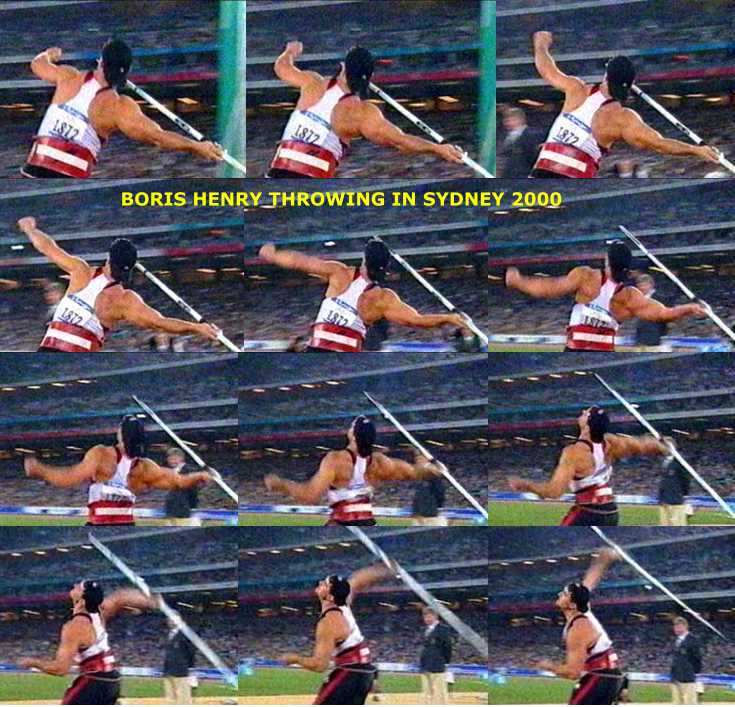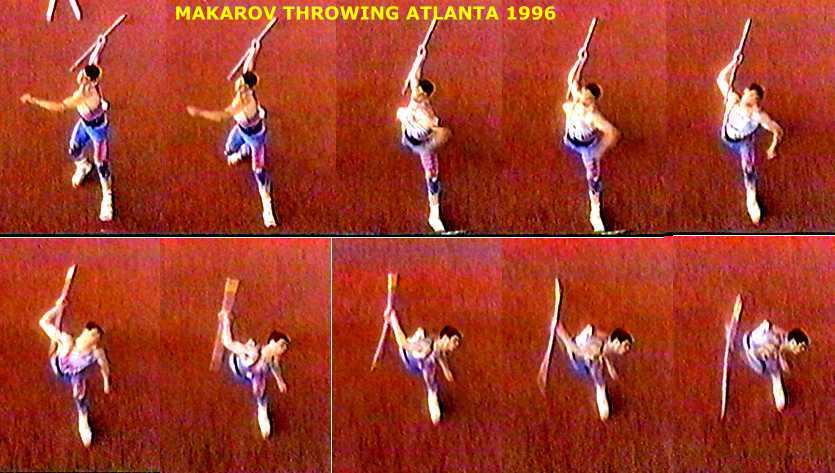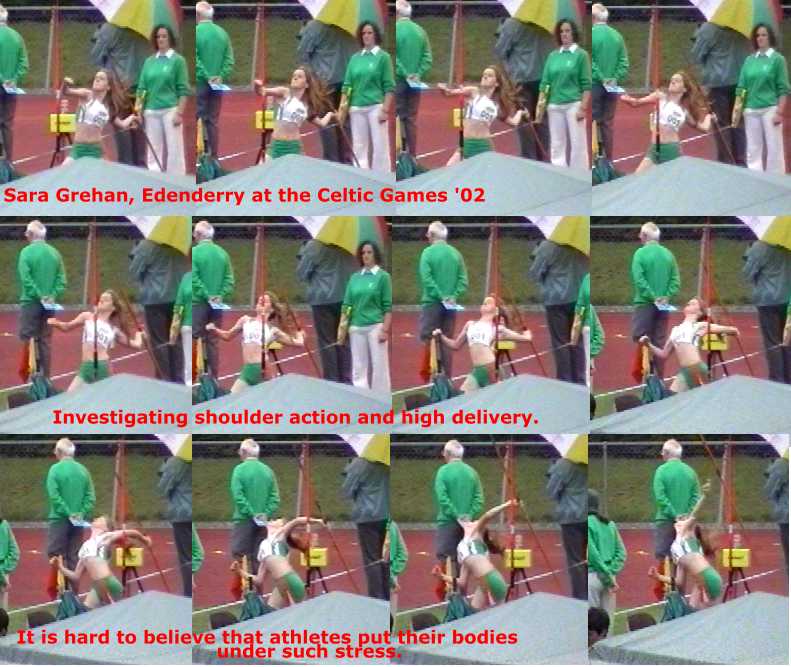
At the end of the year 2002 I wonder if there is anyone out there who misses the contribution of Jack Sweeney's Summer School of Athletics. Not only was it a learning experience for many would be coaches but it was an opportunity also for coaches to meet, talk and discuss training among themselves and with foreign coaches too. I haven't heard about it recently but then I could have missed the notification from the AAI. Undoubtedly both they and one of the associations before them, the B.L.E., would not see the importance to Ireland and athletics of what Jack and his friends tried to do.
Jack was totally into technique in athletics and his keen mathematical brain always sought to analyse technique and to encourage others to do the same. He ran a week long summer school for athletic coaches which must have continued in some form for fifty years. In later times he left the running of the school to the athletic association who committed as they were, never had his love of technique. I often had the pleasure of a discussion with Jack and his friend Joe Desmond who had been the athletic secretary to General O'Duffy (the man who sent out the famous champions to the Games in 1932). Both men passed away about 1995/1997 and Irish athletics has been much the poorer since.
I can hear Jack telling me to cop-on to myself and to get back to talking about athletics. Well, I first attended the summer school in 1965 (that must be a mistake) and clearly remember every evening during the week sitting through an exciting two hour session on the analysis of technique using loop films, which Jack and Joe had an enormous collection of. The technique of numerous world record holders and Olympic champions was viewed, time after time at both the proper speed and in slow motion for the various events - hurdles, sprints, relays, walks, runs, jumps and throws. Jack was strong on the fundamentals - aspects of technique that are essential. Oddly enough he was also a functional coach - if it works for you then do it even if it is not the way everyone else does it. I remember in the early nineties Jack writing an article complaining about a new coaching syllabus which was too strict in telling learner coaches how to coach. He felt that while technique was important, the contribution of the human spirit was more important. I remember also about 1993 being taken back when Jack spoke to me after he overheard my telling a javelin thrower to work the legs and get the hip-in. 'Kennedy', he said 'I wonder if there is time to work the legs or is it a matter of going through the right range of action?' He had understood that throwing from an approach was different to a standing throw. Modern javelin throwers recognise this and do very few if any standing throws in training.
Encouraging Use of Video
Where is this leading us? Well in the tradition of the Summer School I would like to encourage learner coaches to use video both in analysing movement and explaining movement to young athletes. Video and captured frames from video are a great help in coaching. I have used video both at actual speed and slow motion and sequences made from captured frames to motivate young athletes, to view the technique of champions, to compare athletes both with themselves and with champions and to keep a record of the progress of an athlete's technique. If you have the right equipment (and loads of money) there are marvellous software programmes for comparing the technique of your champion with suitable technical models. Unfortunately in this area there is a minefield waiting for the coach in cameras, capture boards, graphic cards, cables and computers. But you can still do a lot fairly cheaply as can be seen in the various sequences captured from the television and from my Sony Digital 8 and JVC VHS camcorders, which are on this site under Sequences. Be careful of the minefield and don't rush out and buy today because someone like me on the internet says that its great.
Using Video to Improve Technique
Here is an example of how television, video recorders and camcorders could be used in appreciating faults in the throwing of young athletes. I've chosen two athletes - Anita and Sarah - and I hope that neither of them object my doing this. Normally I would not bring to attention an athlete's faults in front of others but in this case I am trying to show coaches how video/computers can be used in training. I help one of the girls myself. Tom Hanley helped the other girl. He kept the spirit of the javelin going for many years in the Irish midlands until last summer. Both girls have to cope with the modern problems of leaving school, working and attending college in an age where the dedicated athlete must be a social isolate as well as the problems of what and how to train. If only we had better sports clubs and facilities to support our young but that is a dream and another article. I hope that both girls persist in throwing the javelin as it must be so difficult for them to keep going.


Both girls have pb's around 40m. - one at 39m. and the other at 41m. Both girls have had injuries which at times curtailed training during the year. One had an injured shoulder and the other a sore back. Both girls would love to throw much further. During the summer I took video from the stand at the Tullamore track of the girls competing and printed out the video frames of the actions using my computer. In order to increase (i.e. double) the number of frames in the throwing action, I ran the video from the digital 8 camcorder in slow motion into my S-VHS video recorder and played this S-VHS video again in slow motion, which changed the frames to fields. This extra data gave a better view of each girl's movement. At 25 frames a second our type of video - Pal - is a little slow. The arm can move too far in .04 of a second, which is the time of each frame
Comparing A Model
I decided that it would be better to have a technical model(s) to compare the girls to rather than make a subjective judgement. I searched my videos scattered across the floor in the living room. These videos were mostly made by myself from the television and some had been given by friends.
Unfortunately all the video I had of women's javelin throwing was poor so I had to make sequences of the throwing action of two men competing in the Olympics. I realise that I should have used females but you have to use what you have got. That nice guy Boris doesn't throw like a girl and neither does Makarov - indeed far from it, but don't you think their sequences are great?
Anita's throwing needs to be looked at again from the other side i.e. from the right side as she is a right handed thrower. She appears to commence the throw well but then bends the elbow strangely.
Sarah puts awesome strain on her back and throws the javelin upwards into the sky at a very steep angle. If only she could direct the force outwards she could make great progress in distance. She can only get frustrated or get injured if she continues to throw in this way.

Conclusion
Have I whetted you appetite? Have I shown you a way to develop real technique even if you live at the edge of the world? If I have please use video wisely and in ways that the athlete can appreciate and relate to. Using a video camera has its place but remember that the best computers of all are the eyes and the feelings of the athlete and coach. As Jack of the Summer School would say …. technique is important but the spirit is more important.
Dan Kennedy 31/12/'02